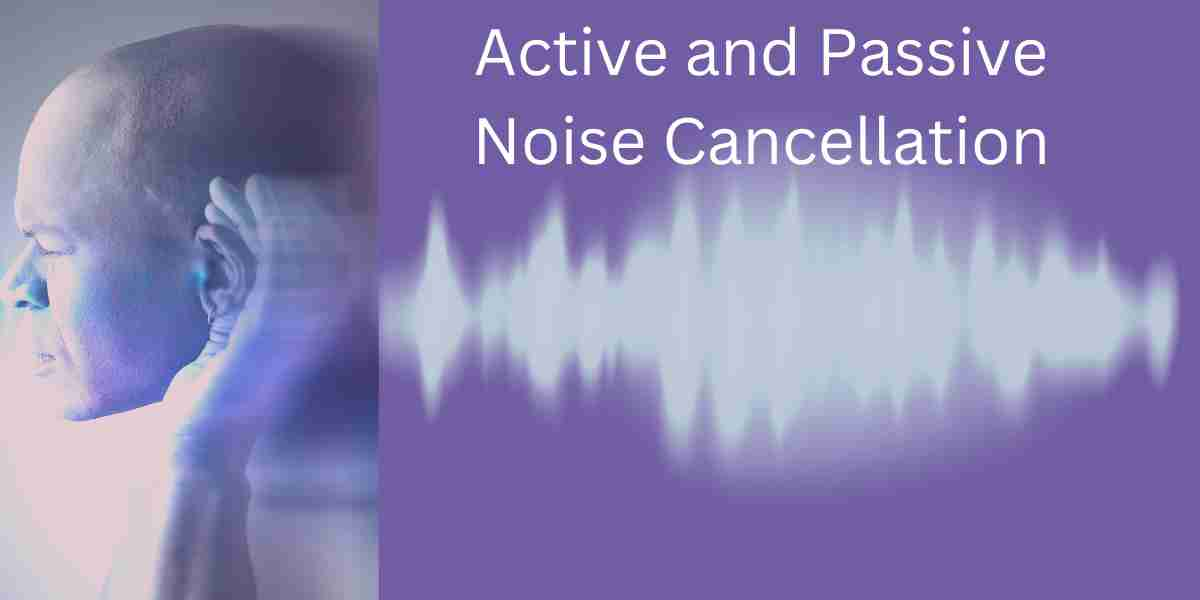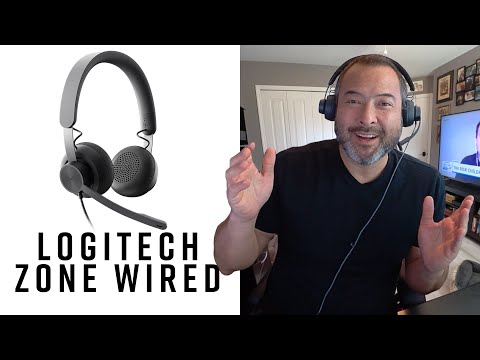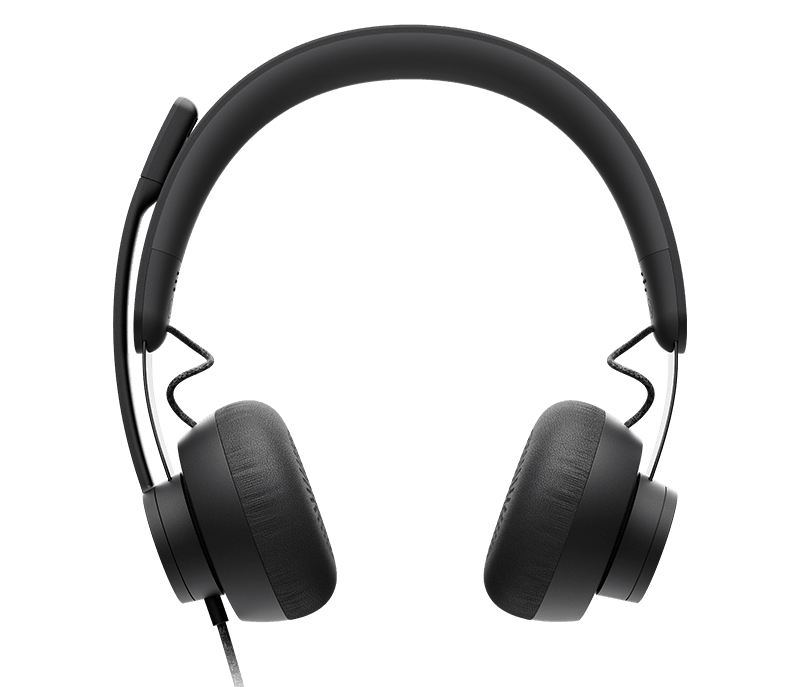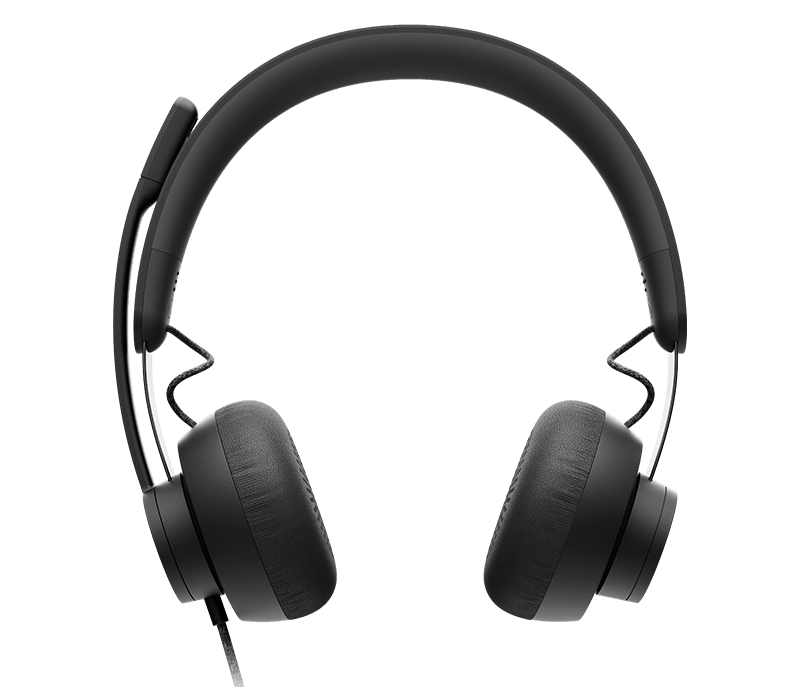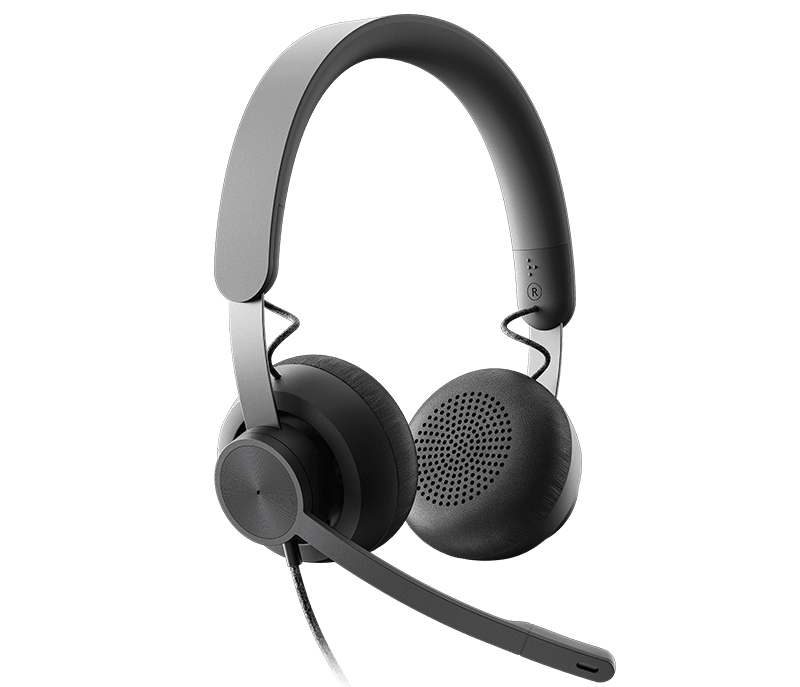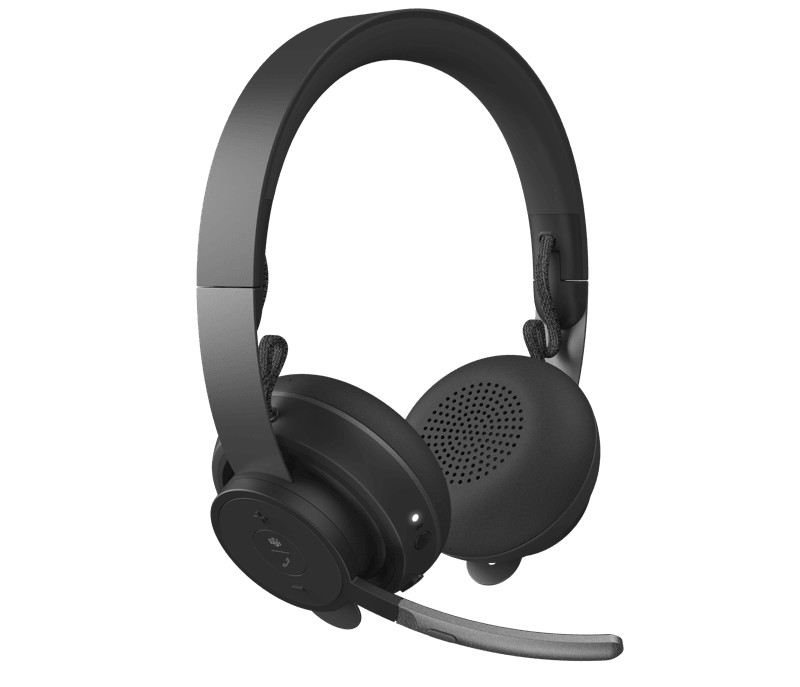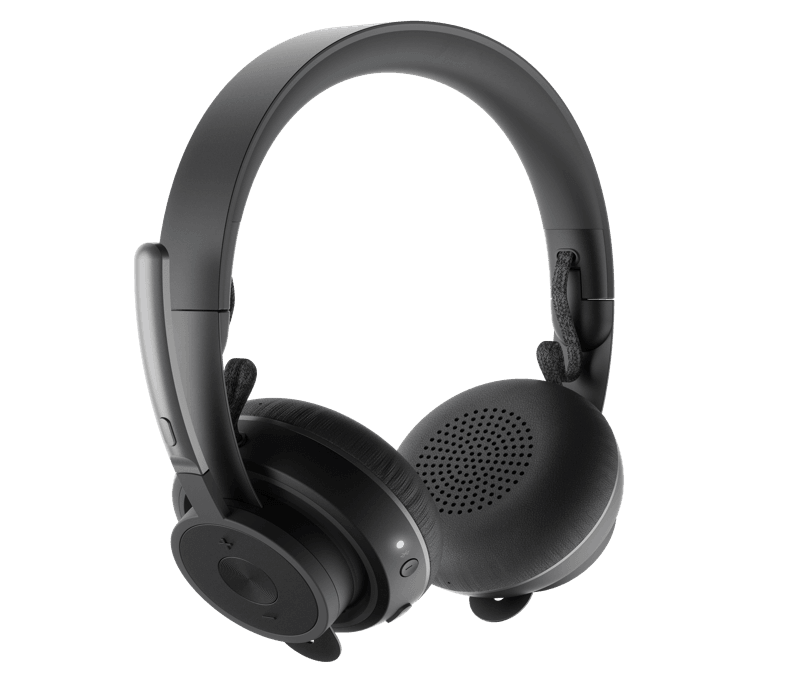1) Introduction
Briefly explain what noise cancellation is and why it's important in headsets
Noise cancellation is a technology that is used to reduce unwanted background noise in audio devices such as headphones and headsets. It works by using microphones to pick up ambient noise, and then generating sound waves that are the exact opposite, or "negative," of the ambient noise, effectively cancelling it out.
There are two main types of noise cancellation: active and passive. Active noise cancellation (ANC) uses electronic processing to actively cancel out ambient noise, while passive noise cancellation uses physical barriers or insulation to block out noise.
Noise cancellation is important in headsets for a number of reasons. One of the main benefits is that it allows the listener to hear audio clearly and distinctly, even in noisy environments. This is especially important for people who frequently use headphones or headsets for work or communication, as it can make it easier to concentrate and understand speech.
Noise cancellation can also help to improve overall audio quality by reducing the amount of ambient noise that can interfere with the listening experience. Additionally, it can be used to enhance privacy by blocking out external noise when making phone calls or listening to music in public places.
Overall, noise cancellation is a feature that can greatly enhance the usability and overall user experience of a headset, especially in noisy environments or when audio quality is important.
Mention the two main types of noise cancellation: active and passive
There are two main types of noise cancellation: active and passive.
Active noise cancellation (ANC) involves the use of microphones to pick up ambient noise and then generate sound waves that are the exact opposite, or "negative," of that noise. These sound waves effectively cancel out the ambient noise, resulting in a quieter environment for the listener. This is achieved by continuous monitoring of noise and adjusting the process to nullify it. This method requires power and sometimes advanced DSP algorithm for maximum efficiency.
Passive noise cancellation, on the other hand, does not involve the use of any electronics or power. Instead, it relies on physical barriers, such as insulation or noise-canceling materials, to block out ambient noise. This can include earplugs, headphones with noise-canceling features, or soundproofing materials used in buildings. Passive noise cancellation can be more cost-effective and reliable than active noise cancellation because it does not require power and any complicated processing algorithm.
It's also important to note that, while active noise cancellation can provide better isolation and often help with higher frequency noise such as speech and human voices. Passive noise cancellation is typically more effective in blocking out lower frequency noises such as engine noise.
2) Active Noise Cancellation (ANC)
Define active noise cancellation and explain how it works
Active noise cancellation (ANC) is a method used to reduce unwanted background noise in audio systems. It works by creating an "anti-noise" signal that is the exact opposite (or "negative") of the unwanted background noise, and then playing this anti-noise signal through speakers. The idea is that when the unwanted noise and the anti-noise are combined, they will cancel each other out, resulting in a reduction of the overall background noise.
Here's a more detailed explanation of how ANC works:
-
The system first uses one or more microphones to capture the unwanted background noise.
-
A processor in the system then analyzes the captured noise and creates an anti-noise signal that is the negative of the unwanted noise.
-
The anti-noise signal is then sent to a speaker or headphones, which play it back into the environment.
-
The anti-noise and the unwanted noise then combine and cancel each other out, resulting in a reduction of the overall background noise.
It's a technique that is widely used in noise-cancelling headphones, earbuds, home theater systems and other devices for hearing protection and audio enhancement.
It is important to note that the amount of noise reduction provided by ANC systems will vary depending on the specific design of the system and the type of noise being reduced. Also, this technology is not perfect, and some residual noise may remain, which is why some devices may include additional features like noise isolation.
Discuss the benefits of ANC, such as reducing ambient noise and improving sound quality
Active noise cancellation (ANC) can provide a number of benefits, including:
-
Reducing ambient noise: ANC is particularly effective at reducing low-frequency background noise, such as the rumble of airplane engines or the hum of a car's engine. This can make it easier to hear speech or music in noisy environments.
-
Improving sound quality: When background noise is reduced, the sound of speech and music can be more clearly heard, which can lead to an overall improvement in sound quality.
-
Enhancing concentration and focus: In busy or noisy environments, it can be difficult to focus on work or other tasks. ANC can help to block out background noise, making it easier to concentrate and get things done.
-
Improving the overall listening experience: By reducing background noise, ANC can help to enhance the overall listening experience, making it more enjoyable to listen to music, watch movies, or participate in phone calls in loud environments.
-
Providing hearing protection: In addition to enhancing audio quality, ANC can also help to protect your hearing by blocking out loud noise, which can cause hearing damage over time.
-
Increased battery life: With ANC, the audio device do not have to work as hard to keep the volume up, which often leads to extended battery life.
It's worth noting that while ANC can be very effective, it's not a perfect technology and some residual noise may still be present. However, it still works pretty well in most cases and is a popular feature among consumers especially in travel-related products such as noise-cancelling headphones, earbuds, and earplugs.
Mention some examples of active noise cancellation technologies, such as feedforward and feedback ANC
There are several different types of active noise cancellation (ANC) technologies that are used in various audio systems, including:
-
Feedforward ANC: Feedforward ANC uses one or more microphones placed outside of the ear canal to capture ambient noise. The system then creates an anti-noise signal that is the negative of the captured noise and plays it back through the speakers. This type of ANC is typically used in larger systems, such as noise-cancelling headphones or home theater systems.
-
Feedback ANC: Feedback ANC uses a microphone placed inside the ear canal to capture noise. The system then creates an anti-noise signal that is the negative of the captured noise and plays it back through the speakers. This type of ANC is typically used in in-ear devices such as earbuds, earplugs.
-
Hybrid ANC: A combination of Feedforward and Feedback ANC, this type uses a combination of both external and internal microphones to capture noise, creating a more accurate anti-noise signal and then play it back. This type of ANC is most commonly found in high-end noise-cancelling headphones.
-
Adaptive ANC: Some systems include an adaptive noise cancellation feature, which adjusts the anti-noise signal automatically in response to changes in the ambient noise. This allows the system to provide the best possible noise reduction in any given environment.
Each of these technologies have their own advantages and disadvantages, and the specific technology used in a particular system will depend on the design of the system and the type of noise it is intended to reduce.
It's also worth noting that some audio products may include additional features, such as passive noise isolation, to provide additional noise reduction and enhance the overall listening experience.
3) Passive Noise Cancellation
Define passive noise cancellation and explain how it works
Passive noise cancellation, also known as passive noise reduction, is a method of reducing unwanted background noise by physically blocking or absorbing it. Unlike active noise cancellation (ANC), which uses electronic means to create an "anti-noise" signal that cancels out background noise, passive noise cancellation simply works by physically blocking or absorbing the noise.
Here's a more detailed explanation of how passive noise cancellation works:
-
The use of barriers or soundproofing materials to block the transmission of sound. This can include walls, doors, windows, and other types of physical barriers that are designed to block or absorb sound waves.
-
The use of materials that absorb sound waves to reduce their amplitude, such as sound-absorbing foam, acoustic panels, or mineral wool.
-
The use of noise-isolating headphones or earplugs, which physically block external noise from entering the ear canal by creating a tight seal around the ear.
Passive noise cancellation is simple, effective and doesn't require power, unlike active noise cancellation. It's a technique that is widely used in construction, transportation and industrial settings, but also in audio equipment and personal audio devices, such as noise-cancelling headphones, earplugs, etc.
It's important to note that passive noise reduction is not perfect and may not be able to block or absorb all types of noise. In addition, passive noise reduction generally works best with lower-frequency noise, as high-frequency noise can be more difficult to block or absorb.
Discuss the benefits of passive noise cancellation, such as reducing ambient noise and creating a more immersive listening experience
Passive noise cancellation (PNC) provides a number of benefits, including:
-
Reducing ambient noise: PNC is effective at reducing ambient noise by physically blocking or absorbing sound waves. It can be particularly effective at blocking lower-frequency noise, such as the rumble of airplane engines or the hum of a car's engine. This can make it easier to hear speech or music in noisy environments.
-
Creating a more immersive listening experience: By blocking or absorbing external noise, PNC can create a more immersive listening experience, allowing you to focus more on the audio you are listening to.
-
Enhancing concentration and focus: By blocking out background noise, PNC can make it easier to concentrate and get things done, especially in busy or noisy environments.
-
Providing hearing protection: PNC can also help to protect your hearing by blocking out loud noise, which can cause hearing damage over time.
-
Cost-effective: Passive noise cancellation is simple, effective and don't require power, unlike active noise cancellation. It's a cost-effective solution for blocking noise in different settings and situations.
-
Durable: Passive noise cancellation solutions do not wear out or fail in the way electronic active noise cancellation solutions may do. They are a more durable solution.
It's worth noting that while passive noise cancellation can be very effective, it's not perfect and some residual noise may still be present, especially with high frequency noise. Passive noise cancellation alone may not be sufficient to fully block out all types of noise, and in some cases may be used in conjunction with active noise cancellation for optimal results.
Mention some examples of passive noise cancellation technologies, such as noise-isolating earbuds and over-ear headphones
There are several different types of passive noise cancellation (PNC) technologies that are used in various audio systems, including:
-
Noise-isolating earbuds: These types of earbuds have a tight-fitting design that creates a seal around the ear canal, which physically blocks external noise from entering the ear canal. They often include multiple sizes of ear tips to provide a more custom fit.
-
Over-ear headphones: These headphones completely cover the ear and can provide passive noise reduction by physically blocking external noise, creating a tight seal around the ear canal and helping to reduce external noise. Over-ear noise cancelling headphones are often combined with active noise cancelling technology.
-
Soundproofing materials: These materials, such as sound-absorbing foam, acoustic panels or mineral wool, are used to reduce the transmission of sound by absorbing sound waves, these types of materials can be used in a variety of settings, including homes, offices, studios, and industrial settings.
-
Noise barriers: Such as walls, windows and other types of physical barriers are designed to block or reduce the transmission of sound. These barriers can be used in a variety of settings, including construction, transportation, and industrial settings.
It's important to note that passive noise cancellation is not perfect and may not be able to block or absorb all types of noise. In addition, passive noise reduction generally works best with lower-frequency noise, as high-frequency noise can be more difficult to block or absorb.
4) Comparison of Active and Passive Noise Cancellation
Compare and contrast active and passive noise cancellation, highlighting the pros and cons of each
| Active Noise Cancellation | Passive Noise Cancellation |
|---|---|
| Effective at reducing a wide range of noise including low-frequency and high-frequency noise. | Effective at reducing lower-frequency noise. |
| Can adapt to changing noise environments in real-time, providing optimal noise reduction. | Not able to adapt to changing noise environments in real-time. |
| Enhances overall listening experience by reducing background noise and providing better sound quality | Not as effective at enhancing overall listening experience as active noise cancellation |
| Useful for those who are sensitive to certain noise, such as those with tinnitus. | |
| Requires power to operate, battery life of the device may be affected. | Simple and cost-effective solution, does not require power to operate. |
| May not completely eliminate all noise, some residual noise may still be present. | |
| Can add complexity and cost to the device. | More durable and less likely to wear out or fail than electronic active noise cancellation solutions. |
Discuss how the two technologies can be combined to create even more effective noise cancellation
Active noise cancellation (ANC) and passive noise cancellation (PNC) can be combined to create an even more effective noise cancellation system. By using both technologies together, it's possible to reduce a wider range of noise and achieve a higher level of noise reduction.
One way to combine the two technologies is by using active noise cancellation in combination with noise-isolating earbuds or over-ear headphones. The active noise cancellation can be used to reduce a wide range of noise, while the noise-isolating design of the earbuds or headphones can physically block external noise. This can provide a higher level of noise reduction than either technology alone.
Another way to combine the two technologies is by using active noise cancellation in combination with soundproofing materials or noise barriers. Active noise cancellation can be used to reduce a wide range of noise, while soundproofing materials or noise barriers can physically block or absorb external noise. This can be effective for certain settings such as office, home, and industrial environments.
It's also worth noting that some audio products may include adaptive noise cancellation feature, which adjusts the anti-noise signal automatically in response to changes in the ambient noise. This allows the system to provide the best possible noise reduction in any given environment, combining the flexibility of active noise cancellation with the durability of passive noise cancellation.
In summary, combining active and passive noise cancellation can provide a more comprehensive solution for reducing unwanted noise, by effectively tackling a wide range of frequencies, in different environments and settings.
5) Choosing the right Noise Cancellation Headset
Provide some tips and advice for choosing a headset with the right type of noise cancellation for your needs
When choosing a headset with noise cancellation, it's important to consider a few key factors to ensure that you select the right type of noise cancellation for your needs:
-
Assess the type of noise you need to reduce: Different types of noise require different types of noise cancellation. For example, if you need to reduce low-frequency noise such as airplane engine noise, passive noise cancellation (PNC) or active noise cancellation (ANC) with a focus on lower frequencies will be effective. If you need to reduce high-frequency noise such as human voices, active noise cancellation (ANC) with a focus on higher frequencies will be more effective.
-
Consider your usage scenario: If you'll be using the headset primarily in one location, such as an office or at home, passive noise cancellation may be sufficient. But if you'll be using the headset in a variety of settings, such as on a plane or in a train, active noise cancellation may be a better choice as it can adapt to changing noise environments.
-
Look for additional features: Some headsets come with additional features such as noise isolation, which can provide additional noise reduction. Also, you might want to consider features such as wireless connectivity, noise canceling microphone, and battery life.
-
Read reviews and compare different models: Read reviews from other users and compare different models to see how well they perform in different environments and settings. Additionally, look for products that have certifications from organizations such as the National Acoustic Laboratories (NAL) for noise canceling products.
-
Test it before you buy it: If possible, try out the headset before you buy it to see how well it performs in the types of environments where you'll be using it. This can give you a better idea of how well the headset will perform in your specific situation.
Overall, it's important to choose a headset that is designed to reduce the specific type of noise you need to eliminate, has the features that you need, and has good customer reviews, testing the product is always a good idea as well. It's also worth noting that a combination of active and passive noise cancellation can provide the most effective noise reduction, so choosing a product that has both types of noise cancellation could be a good choice.
Mention some popular models of headsets that feature active and/or passive noise cancellation
Some popular models of headphones that feature active noise cancellation (ANC) include the Bose QuietComfort 35 II, Sony WH-1000XM4, and Bose QuietComfort 35. These headphones use advanced algorithms and microphones to actively cancel out background noise, making them a great choice for use in noisy environments.
Some popular models of headphones that feature passive noise cancellation include the Sony WH-1000XM4, Bose QuietComfort 35 II, and the Bose QuietComfort 35. Passive noise cancellation works by physically blocking out sound with the use of cushions, tight-fitting ear cups, and other design features that create a physical barrier between the noise and the listener's ears.
Additionally, there are also hybrid models that incorporate both active and passive noise cancellation. For example, the Sony WH-1000XM4 headphones feature both active and passive noise cancellation. These headphones use both active and passive techniques to provide the most comprehensive noise cancellation experience.
Please keep in mind that the list is not exhaustive and there are many other options available on market depends on the brand and the price range.

